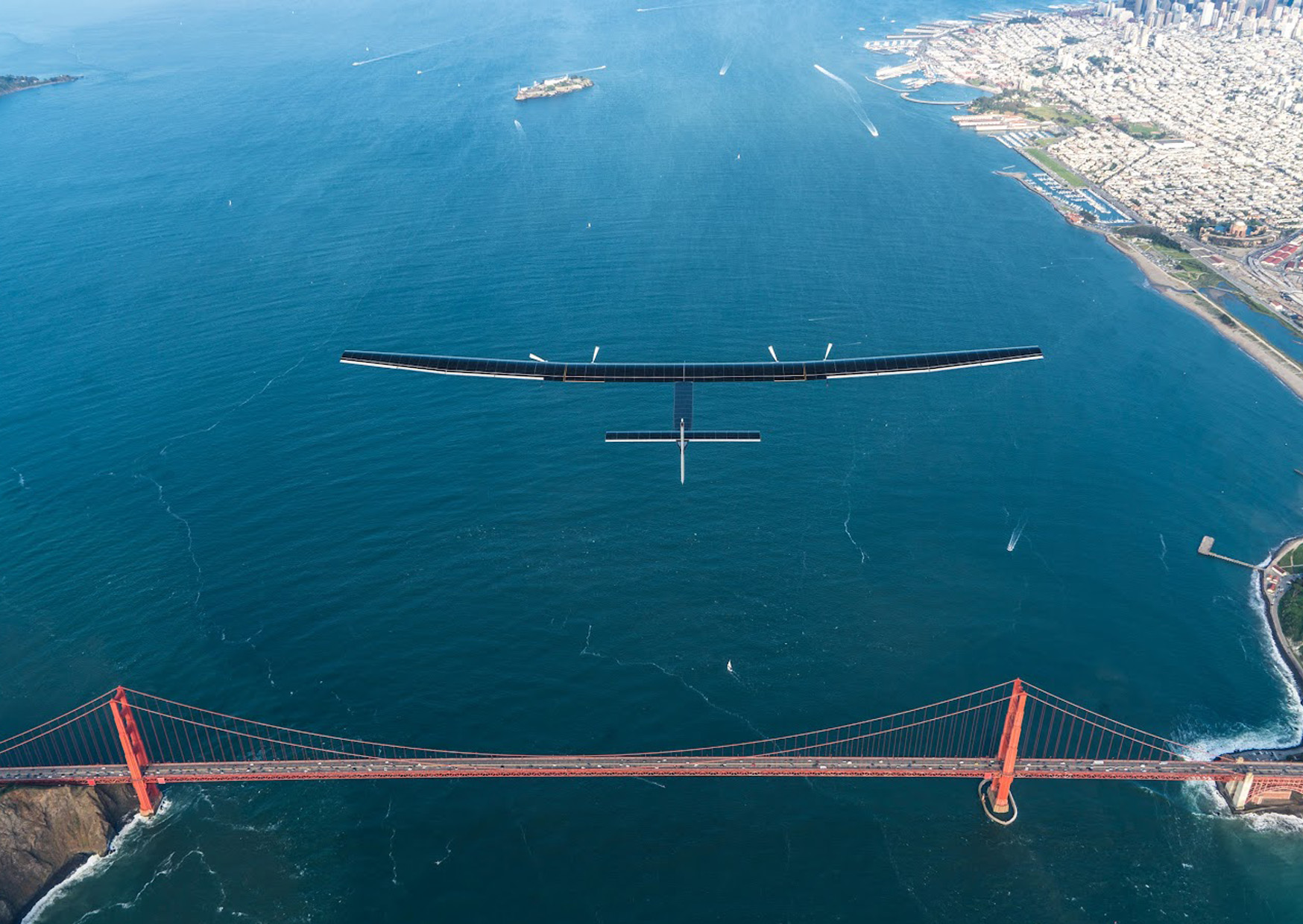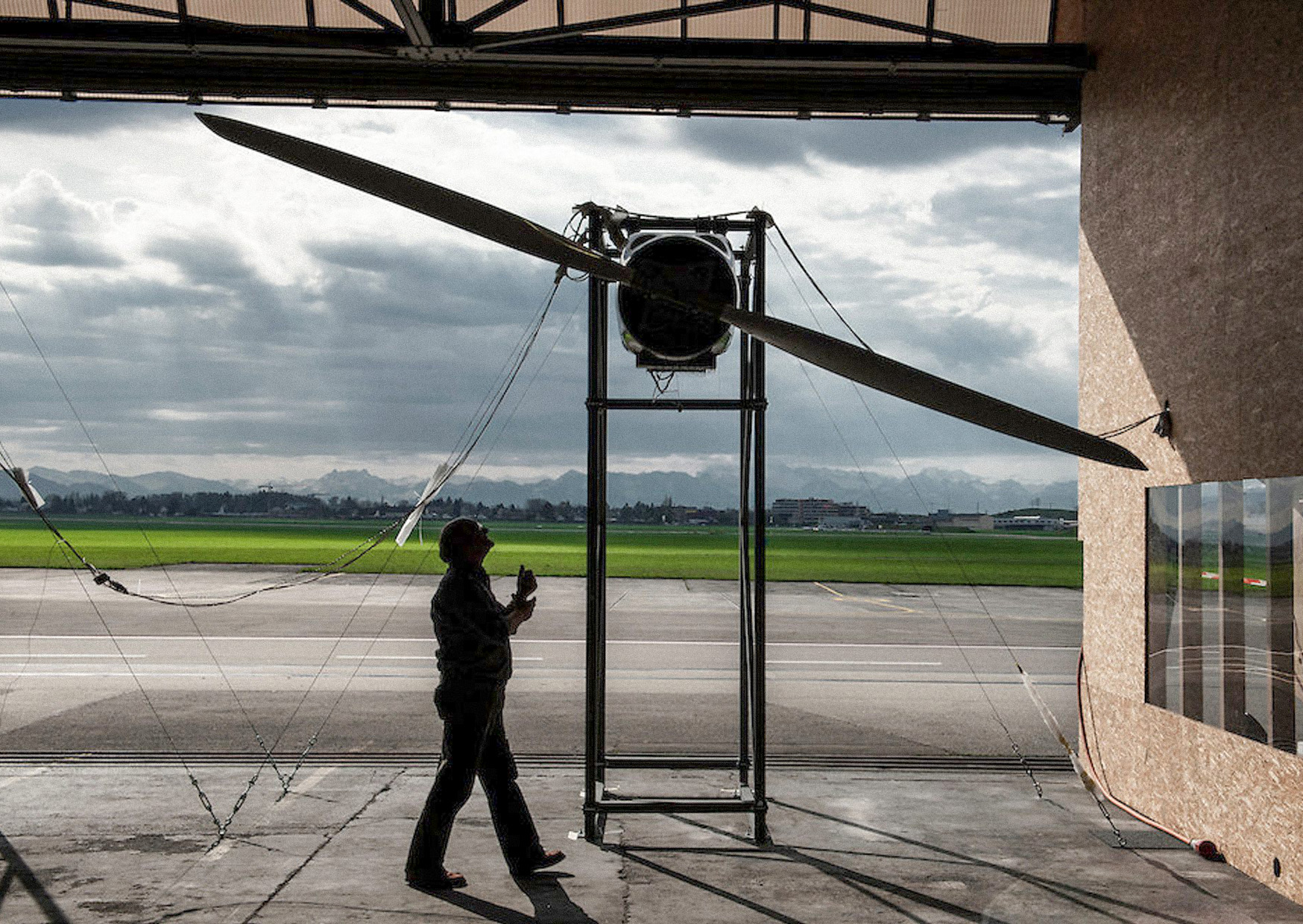Historic flight
Přečtěte si následující článek a odpovězte na otázky.
Otázky:
- Uveďte energetický problém, kterým se tento dokument zabývá.
- Uveďte zdroj primární energie, dva měniče energie a konečnou energii použitou v letadle.
- Nakreslete schéma přeměn energie v letadle.
- Diskutujte o „užitečnosti“ tohoto průkopnického letu.
Solar Flight
Bertrand Piccard and André Borschberg set out and accomplished something that still seems impossible today: the First Round-The-World Solar Flight, powered only by the sun, with no fuel or polluting emissions.
In line with the Piccard Family tradition of scientific exploration and protection of the environment, Solar Impulse wanted to demonstrate that clean technologies can achieve impossible goals.
Solar Impulse is not the first solar airplane, but it is the first to fly day and night, without any fuel, only using energy stored in its batteries. It is also the first to have crossed oceans: 5 days and nights from Nagoya, Japan, to Kalaeloa, Hawaii; 3 days and 2 nights from Kalaeloa to San Francisco; and 3 days and nights from New York to Seville, Spain.
The plane’s unusual look undoubtedly helped the message of the project to be spread worldwide. The wingspan of a Boeing 747 Jumbo Jet, the weight of a family car, the power of a small motorcycle, Solar Impulse 2 is the largest aircraft ever built with such a low weight.
| Capacity | 1 pilot |
| Wingspan | 72 m |
| Weight | 2.3 tons |
| Number of solar cells | 17 248 |
| Number of propellers and batteries | 4 |
| Total energy produced from Abu Dhabi to Abu Dhabi | 11,655 kWh |
| Maximum flight time achieved (André Borschberg) | 117 hours 52 minutes |
| Maximum altitude | 28,000 feet |
| Average airspeed | 75 km/h |
| Maximum recorded ground speed | 216 km/h |
| Fuel consumption | 0 L |
On the Earth at midday, each square meter of land surface receives the equivalent of 1000 W of light power. Over a 24-hour period, this averages out at 250 W/m2. Using 250 m2 of photovoltaic cells and 12% total efficiency of the propulsion chain, the plane’s motors achieve an average power output of less than 6 kW – roughly amount of power the Wright brothers had in 1903 when they made their first powered flight. And it is with that optimised energy from solar power to the propeller that Solar Impulse succeeded in flight day and night without fuel!
Flight Cycle
To understand how Solar Impulse can fly by night as well as by day, let us look at what happens during a 24 hour flight. For the solar panels, the day begins late and ends early: enough light to sustain flight is limited to just 10 hours per day! It’s a race against time…
6 a.m.: The sun has just risen. The airplane is on the runway. Its batteries, charged by the sun on the previous day, are nearly full. So it can take off using that stored energy…
6 a.m. to 6 p.m.: It gains altitude. The four motors turn at maximum power as the plane must create lift (the force that allows the plane to climb) to reach a thinner layer of air where there are fewer clouds. Despite the steady energy consumption, the batteries are charging.
Nearing 6 a.m.: It reaches 9000 meters (29,500 feet), its maximum altitude. The sun’s rays fade. The motors are throttled down and the plane starts to glide down to an altitude of 1500 meters (5000 feet), which takes about 4 hours, during which time it consumes almost no electricity…
Nearing 10 p.m.: At 1500 meters (5000 feet) of altitude, the pilot powers up the motors again, but this time they will take their energy from the batteries. The airplane flies like this until daybreak when solar energy again feeds power to the motors and recharges the batteries. A new cycle begins.
(Upraveno podle webu https://aroundtheworld.solarimpulse.com/.)

Zdroj

Zdroj

